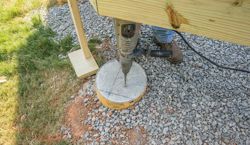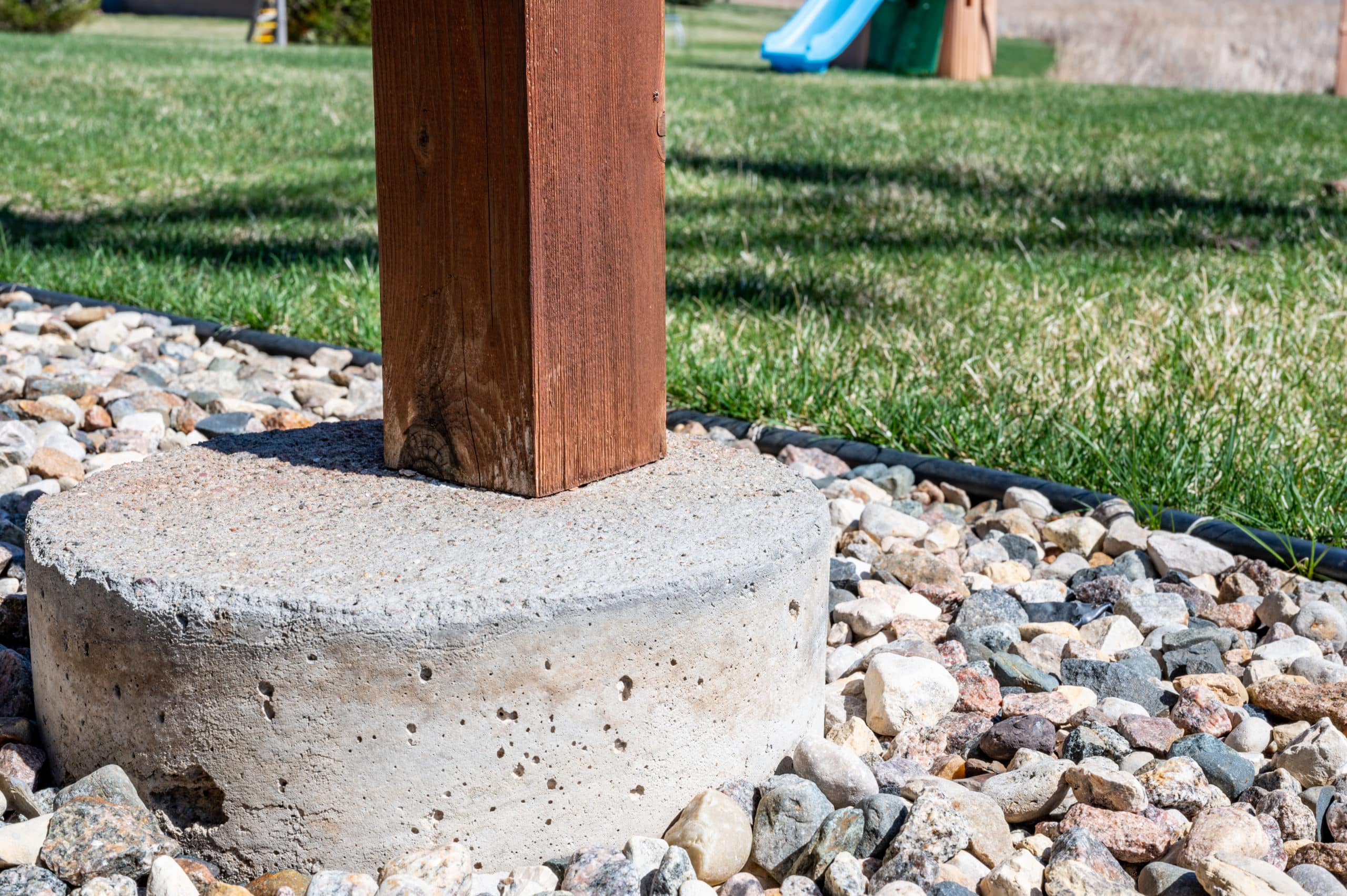Choosing the Right Deck Footings for Security and Toughness
The longevity and safety and security of your deck depend heavily on the kind of grounds you select, as they supply the essential support and stability to stand up to the examination of time. In this conversation, we will certainly check out the numerous kinds of deck footings, consider the crucial factors to evaluate when making a choice, and delve into the pros and disadvantages of various choices.
Sorts Of Deck Grounds
These footings consist of a cylindrical opening filled up with concrete, which offers a solid structure for the deck messages. Concrete pier grounds are reasonably easy to mount and provide outstanding stability, making them a popular choice for numerous deck jobs.
These footings are mounted by screwing them into the ground, which produces a safe and secure foundation for the deck. They also enable for simple change and progressing of the deck if required.
Alternatively, some home builders decide for precast concrete footings. These grounds are constructed from durable concrete and can be found in various sizes and shapes to suit various deck designs. Precast concrete grounds are convenient to install and offer a stable base for the deck structure.
Finally, another choice is the post-in-anchor footing system. This sort of ground includes driving a metal anchor right into the ground and attaching it to the deck post. It offers flexibility in regards to positioning the deck blog posts and appropriates for decks with lightweight frameworks.
When choosing the appropriate kind of deck footing, it is vital to think about variables such as dirt problems, deck lots, and regional structure codes (Deck Footings). Consulting with a professional specialist or architectural engineer can assist make certain the suitable ground is chosen for a secure and safe deck
Variables to Think About When Picking Footings
When selecting the ideal grounds for a deck, it is vital to very carefully consider different elements such as dirt problems, deck load, and adherence to neighborhood structure codes. These elements play a significant function in ensuring the stability and toughness of the deck structure.
One of the key elements to consider is the dirt problems. The sort of dirt on which the deck will be constructed establishes the kind of footings called for. Decks developed on sandy or loose dirts might call for much deeper grounds to give sufficient assistance and protect against settling. On the other hand, decks developed on clay or large soils may need grounds that can suit the soil's propensity to broaden and contract.
Another essential factor is the deck tons. The weight of the deck, consisting of the materials made use of and any type of prospective real-time tons such as furniture or celebrations, need to be taken into consideration when choosing footings. The grounds should be designed to birth the weight of the deck and distribute it evenly to avoid any kind of structural concerns or failings.
Finally, adherence to local building regulations is extremely important. Building regulations vary from region to area, and it is vital to follow the particular requirements established by the local authorities. Deck Footings. These codes make certain that the deck is developed safely and fulfills the required criteria for architectural honesty and load-bearing capability
Concrete Grounds: Advantages And Disadvantages

Concrete footings offer a number of advantages and disadvantages when made use of as the structure for a deck. On the favorable side, concrete grounds supply excellent security and toughness. Concrete is a stiff and strong material that can sustain heavy lots and endure numerous weather condition conditions. It likewise has a long life expectancy, making it a trusted option for long-term use.
An additional advantage of concrete footings is their adaptability. They can be poured into various forms and sizes to suit various deck styles and configurations. Concrete footings official source can be tailored to fit the certain requirements and needs of the deck structure.
Nevertheless, there are also some drawbacks to making use of concrete footings. One major disadvantage is the cost and labor associated with their setup. Concrete footings need excavation and commonly require the aid of hefty machinery. This can raise the general cost of the deck project and might need expert support.

Helical Piers Vs. Sonotubes: Which Is Much better?
In taking into consideration the foundation alternatives for a deck, the contrast in between helical piers and sonotubes is crucial in identifying the exceptional choice. They are turned right into the ground utilizing hydraulic machinery, offering a sturdy and secure structure for the deck.
The helical plates on the piers develop a solid grip with the dirt, shifting or stopping any activity of the deck. Sonotubes, on the other hand, count only on the concrete filling up for security, which may not supply the exact same degree of stamina and resistance.
In regards to setup, helical piers are relatively much easier and faster to set up compared to sonotubes. The hydraulic machinery made use of to twist the piers right into the ground ensures a efficient and quick procedure. Sonotubes, on the other hand, require excavating openings and pouring concrete, which can be time-consuming and labor-intensive.
Additionally, helical piers are an even more flexible choice. They can be made use of in different dirt problems and can be readjusted or strengthened if needed. Sonotubes, on the various other hand, may call for additional assistance, such as rebar, in specific dirt problems or areas with high load demands.
Picking the Right Footings for Your Deck's Measurements
For optimal structural stability, it is vital to carefully choose the appropriate footings that line up with the measurements of your deck. The measurements of your deck, including its elevation, size, and width, play a significant function in identifying the kind and size of grounds called for.
When picking footings for your deck, it is important to think about the load-bearing capacity of the dirt. The weight of the deck, combined with the weight of any type of furnishings or individuals on it, exerts a substantial force on the grounds (Deck Footings). It is vital to select grounds that can effectively support this weight without moving or sinking over time.
The dimension and shape of the grounds should additionally be thought about. Bigger decks with higher measurements require bigger footings to offer sufficient stability and assistance. The form of the footings, whether they are square or rounded, relies on the style and layout of the deck. In addition, the deepness click here to find out more at which the grounds are installed should be determined based upon the frost line in your area to avoid any type of heaving or shifting due to freezing temperature levels.
Verdict
In conclusion, picking the right deck grounds is critical for making certain stability and resilience. Factors such as the kind of footings, the deck's dimensions, and the pros and disadvantages of different choices need to be thought about.
These footings consist of a round hole filled with concrete, which gives a solid structure for the deck messages. Concrete pier grounds are relatively simple to mount and provide exceptional stability, making them a prominent selection for many deck jobs.
Precast concrete grounds article are convenient to mount and offer a secure base for the deck framework.
It offers flexibility in terms of placing the deck articles and is suitable for decks with lightweight frameworks.
Concrete footings supply a number of benefits and negative aspects when utilized as the structure for a deck.